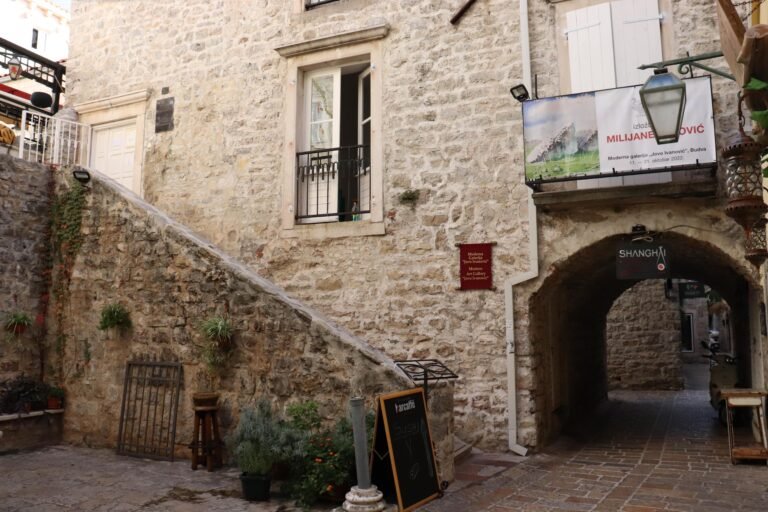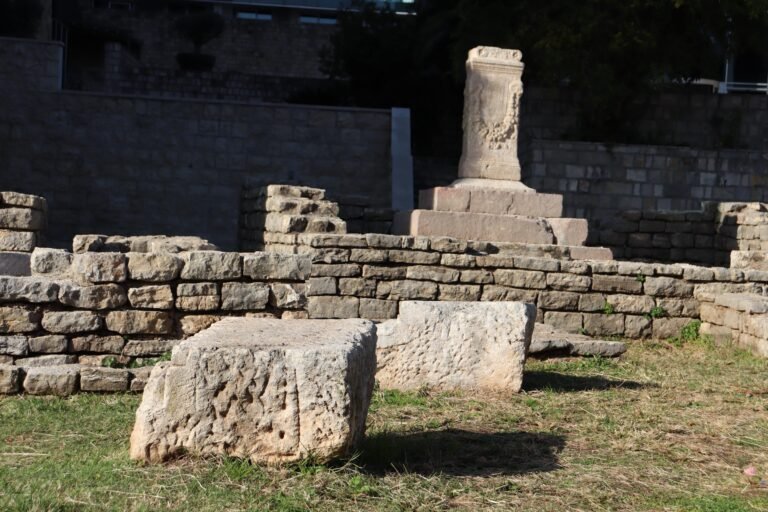Santa Maria in punta is located in the extreme southwest of the oldest part of the town, near the town walls on the sea cliff. It is one of the most representative buildings of the Old Town. Its construction began during the 9th century when territories of the coast of Budva began to be inhabited by the members of the missionary order of St. Benedict.
The church is abutted on the west side by the medieval town wall with visibly finished battlements and by the tower on the side. Apart from representing a significant architectural and ambient unity of the Old Town, it also represented a significant meeting place of the Marian cult.
In the course of the research, a plaque with a carved inscription and the year 840 has been found and later installed in the church. The accuracy and reliability of the plaque are still under debate.
However, it is known that this church was a nucleus for enlightening the surrounding population. Copying of ancient writings of Greek and Latin writers as well as studying the culture of the indigenous took place in this church. Numerous legends about the church mention the miraculous icon of the Great Panagia, which, according to historical records, resided in the apse of the church of St. Mary for four centuries. After which it was transferred to the church of St John the Baptist, where it resides today.
Unfortunately, due to the numerous demolitions and renovations of this building, we cannot speak of a single established type of church. The specificity of the architecture of this sacred object is reflected in the presence of different styles that testify to its centuries-old tradition. In addition to the Romanesque architectural complex with Gothic influences, the building also holds baroque elements on the stone plastic, which give an overall historical and artistic quality to this unique example of the high degree of architectural craftsmanship value.





